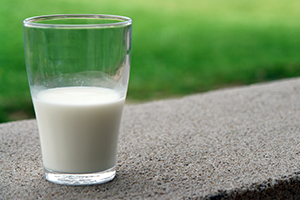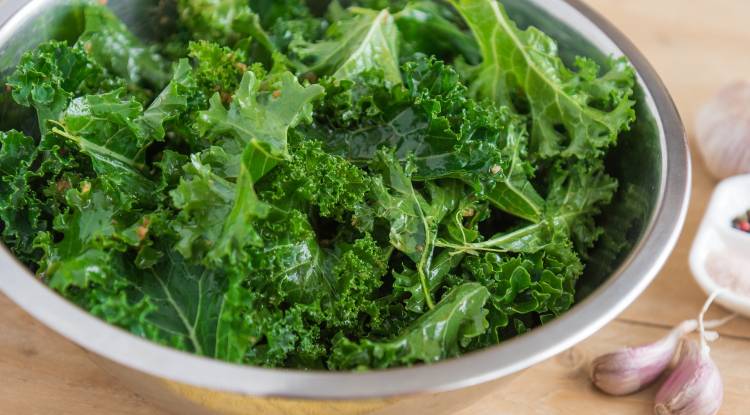Health Benefits of Conjugated Linoleic Acid (CLA)

Conjugated linoleic acid, or simply CLA, has been a very popular dietary supplement in bodybuilding and fitness communities for years. This is due to its effect on molecular pathways that regulate fat burning. However, this supplement is now receiving more attention from the general public who are often using it alongside a healthy, calorie controlled diet and a structured exercise plan to promote favourable changes to body composition.
 But what is CLA? CLA is a naturally occurring type of fat. It is basically a linoleic fatty acid (a type of omega 6 essential fat) that has a double bond somewhere along the molecule. Typically, we obtain small amounts of CLA through the diet by ingesting animal products such as meat, milk, cheese and butter. Button mushrooms also contain small amounts of CLA.
But what is CLA? CLA is a naturally occurring type of fat. It is basically a linoleic fatty acid (a type of omega 6 essential fat) that has a double bond somewhere along the molecule. Typically, we obtain small amounts of CLA through the diet by ingesting animal products such as meat, milk, cheese and butter. Button mushrooms also contain small amounts of CLA.
It is estimated that on average, most people in the developed world obtain less than 500mg of CLA per day through the diet. This is a lot less than has shown to be effective in published research, which is why supplementation has soared in popularity. Please continue reading this article as we uncover the research behind CLA supplementation, so that you have all the information you require to see whether this natural nutrient would be a good addition to your lifestyle.
What are the Benefits of Conjugated Linoleic Acid?
As earlier mentioned, CLA has been popular for years in those individuals who push their bodies hard to obtain a physique which has high amounts of muscle and low levels of body fat. However, as many western nations are in the middle of an obesity crisis, there is significant interest in ways to combat the issue. After all, it is important to remember that high levels of body fat can lead to diabetes, heart disease and certain cancers, to name just a few potential health risks. But what is the current consensus from published scientific findings? Let’s find out.
Fat Loss
 There have been over 20 published studies that have looked at the effect of CLA on fat loss, but unfortunately like many areas of research, the findings have not always been positive.
There have been over 20 published studies that have looked at the effect of CLA on fat loss, but unfortunately like many areas of research, the findings have not always been positive.
A study published in the Journal of Nutrition in 2000 found that overweight and obese participants who took 3.4g, 5.1g or 6.8g of CLA daily for 12 weeks led to significantly greater reductions in body fat when compared to the group that took a placebo. Interestingly, the researchers reported that the higher doses did not lead to greater reductions in body fat, indicating that somewhere around 3.4g is an optimal dose for this population.
There were findings to complement the above study published in 2012. This study, again conducted in overweight and obese individuals found that 12 weeks of taking a daily provision of 3.4g of CLA led to significant reductions in body mass, body mass index (BMI), total fat mass, body fat percent and waist-to-hip ratio, when compared to the group that took a placebo. The results were also found to be more impressive in those individuals who were the most obese. The researchers concluded that CLA supplementation was an effective, but more importantly, safe way to reduce markers of obesity.
Further positive results are seen by a study conducted in healthy, non-obese participants, which found that daily supplementation with 4.2g of CLA, saw total body fat decrease by 3.8% in 12 weeks, which was significantly better than the group who received a placebo. It is thought that CLA works by stimulating the molecular pathway known as PPAR, which is partially responsible for the metabolism of fat, as well as glucose.
That being said, it is important to note that there are numerous published articles that have reported no effect of CLA supplementation on body fatness. Published in the Journal of Nutrition in 2011, Joseph and colleagues found that 3.5g of CLA per day did not exert any improvements to body mass, body fat, muscle mass or blood markers of metabolic health in 27 overweight men with high cholesterol over an 8 week period.
Similar results can be seen by a paper published in the British Journal of Nutrition that saw no significant improvements to body composition or blood markers of fat metabolism in 44 healthy adults who either took 3.76g of CLA per day or a placebo over a 14 week period.
Although typically the amount of fat loss observed in certain scientific investigations has been modest at best, it is important to understand that even reductions in body mass of 5% are associated with clinically relevant improvements to health, wellbeing and life expectancy. Furthermore, the majority of these studies have just administrated CLA supplementation without the participants making positive changes to their dietary practices or exercise regime, which would certainly amplify the magnitude of the results.
Muscle Mass
 Having good levels of muscle mass is very important for numerous reasons, but especially to stay active, protect bones and joints, and also maintain a good quality of life alongside advancing age. Unfortunately, many overweight and obese people who lose weight don’t just lose fat; they also experience a decrease in muscle mass too.
Having good levels of muscle mass is very important for numerous reasons, but especially to stay active, protect bones and joints, and also maintain a good quality of life alongside advancing age. Unfortunately, many overweight and obese people who lose weight don’t just lose fat; they also experience a decrease in muscle mass too.
Not only is this bad for health and wellbeing, but it is likely to make maintaining a healthy bodyweight difficult. This is because muscle mass has a high metabolic activity, meaning that it uses lots of calories daily. So if muscle is lost, the body will burn fewer calories per day, meaning that you will need to eat even less to continue to lose fat, and regaining weight may be easier.
Numerous investigations which have administrated CLA on a daily basis have recorded both increases in muscle mass, and also preservation of muscle during a weight-loss regime. One study published in Obesity in 2008 found that 3g of CLA, paired with 3g of Omega 3 fish oils was effective at increasing muscle mass by 2.4% over a 12 week period in obese young men. This impressive increase was also not tainted by negative changes to body fat levels or blood readings in relation to metabolic health. These results were also independent of exercise or dietary changes, which makes them all the more notable.
In one of the few studies that have combined CLA with exercise, there have been impressive results. This study conducted in 20 healthy males, found that exercising in a gym for 90 minutes 3 times per week led to both significant improvements in muscle mass and fat-mass over a 12 week period. What is more impressive is that the researchers only provided the participants with 1.8g of CLA per day split into 3 doses. It would have been interesting to see the magnitude of the results if a higher dosage was provided, as it is well-known that amounts of double that are more effective at promoting changes in body composition.
There is also some evidence for the efficacy of CLA supplementation in athletic populations. One study investigated whether taking 6g of CLA daily, in conjunction with 36g of whey protein and 9g of creatine was more effective at increasing muscle mass than taking whey protein and creatine alone. Over a 5 week period, it was found that the addition of CLA led to significantly greater increases in muscle mass and strength in 69 young men and women who were performing resistance training 6 times per week.
Following on with the trend of equivocal results from CLA provision, there have also been published studies that have not seen any favourable changes to muscle mass however. The reason for the disparity in findings is unclear, but is likely due to the differences in dosage, duration, participants and study methods. It appears that CLA supplementation by itself appears to have a modest, but appreciable impact on muscle mass and/or fat loss. Unsurprisingly, and like most weight-loss supplements, the benefits are amplified by taking the supplement alongside regular exercise and a calorie-controlled diet.
How Much Conjugated Linoleic Acid Should I Take?
From the plethora of scientific research into CLA, it appears that the optimum dosage falls between 3-4g per day. Although there are studies that have frequently used more than this, there is no strong evidence to suggest that anything over 3-4g is significantly better. However, as the research so far is equivocal, with some studies supporting CLA supplementation and others not, it is possible that a higher dose may be more effective, but this is unlikely to be by a notable amount.
What are the Side Effects of Conjugated Linoleic Acid Supplementation?
As CLA is naturally occurring, it comes as no surprise that side effects are infrequent and usually mild. The most commonly cited issues are stomach ache, diarrhoea and nausea. That being said, research has shown that taking 7.5g per day for a year was shown to reduce HDL (‘good’) cholesterol and increase blood triglyceride levels. Positively, there were no clinical signs of toxicology apparent in any of the studies participants.
With regards to children, there has been one study, 7 months in duration that provided 3g per day and found that the CLA was well tolerated and had minimal side-effects. However, further studies to reinforce these findings are lacking, and thus recommending CLA for children may not be appropriate. Similarly, there is no evidence of the safety for pregnant or lactating women, so these individuals should avoid supplementation.
Summary
Hopefully this article has outlined the current state of the scientific research with regards to CLA supplementation and given you the information you need to assess whether CLA would be a good addition to your healthy, balanced diet and structured exercise regime.
Take-home points:
• CLA is a conjugated form of the omega 6 essential fat, linoleic acid. It is naturally occurring in the diet and is found in foods such as meat, cheese, milk, butter and mushrooms. However, supplementation is the only practical way to achieve the daily amount of CLA that has shown to be effective in scientific trials.
• CLA has been popular with bodybuilders, athletes and fitness enthusiasts for a number of years, but has seen a recent increase in popularity with the general public.
• Although the research at this current time is equivocal with regards to CLA’s effect on body composition (muscle gain and fat loss), there are numerous studies showing its effectiveness, especially when paired with changes to diet and exercise.
• With regards to optimum dosage, the current evidence indicates 3-4g a day.
• CLA is well tolerated by most individuals, with only minor side effects such as stomach ache, diarrhoea and nausea experienced by some people. There is some evidence that suggests high doses over a long period can negatively affect blood cholesterol levels however.
• As the research is currently lacking into the safety of children and pregnant/lactating women, CLA supplementation is not currently advised in these populations.
Shop for Conjugated Linoleic Acid (CLA) here.
Sources:
http://jn.nutrition.org/content/130/12/2943.long
https://www.ncbi.nlm.nih.gov/pubmed/22261578
https://link.springer.com/article/10.1007/s11745-001-0784-7
https://www.ncbi.nlm.nih.gov/pubmed/21593349
https://www.ncbi.nlm.nih.gov/pubmed/17298695
https://www.ncbi.nlm.nih.gov/pubmed/18356842
https://www.ncbi.nlm.nih.gov/pubmed/11725826
https://www.ncbi.nlm.nih.gov/pubmed/19403955
https://www.ncbi.nlm.nih.gov/pubmed/15354322
https://www.ncbi.nlm.nih.gov/pubmed/20200257

 Nicole
Nicole 
























